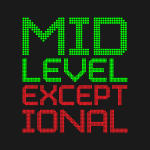Asked and Answered: What in the World is a Trade Exception?
Friend of the blog Seth Rosenthal emailed us yesterday to ask the following question:
trade exceptions, how the *&%$ do they work, and how does that depend on the cap and the apron and all that stupid awful ^@$!?
Trade exceptions are one of the rare parts of the NBA world that has stayed both incredibly important and narrowly understood over the years. This largely stems from how intensely complicated the system appears at first glance but can also be explained by how narrowly held specifics on them are to this day.
Explaining Trade Exceptions
Building on Larry Coon’s excellent work, there are a few key concepts to understand about trade exceptions:
They count against the cap but not the luxury tax – Paralleling other exceptions in the NBA, trade exceptions reduce a team’s salary cap space when on the books. Like the Mid-Level, they can be renounced should a team want that but already-existing trade exceptions can also be used to prop a team over the cap should that be strategically beneficial. (I must mention here that teams under the cap do not receive trade exceptions, another value of using tricks like cap holds to stay over the cap when possible to maximize flexibility.) However, it should also be noted that trade exceptions do not count against the luxury tax. Teams under the tax line like Oklahoma City and Golden State last season were not pushed over by having them and teams in the tax like Miami and Brooklyn did not have to pay additional tax on theirs.
They last a calendar year at maximum – Trade exceptions last up to one year after the trade that created it was approved by the league office, unless that anniversary falls on a weekend or holiday (then the team gets until the next business day.)
They can only be used to acquire players under contract – A team cannot sign a free agent using a trade exception. However, it can be used in a sign and trade, though that would require the participation of the player’s previous team and that team being able to sign said player to the agreed upon contract. This last note became important in the case of Shaun Livingston this week – since the Nets do not have the ability to sign Livingston to a full Mid-Level deal like he agreed to with the Warriors, he cannot be signed and traded into Golden State’s trade exception because he could not be signed by Brooklyn to that contact in the first place.
A trade exception cannot be combined with another player or exception to acquire a more expensive player – To me, the easiest way to think about each trade exception is as a bank account that you cannot add money back into. You can take some out here and there as long as the balance never gets below zero. The important difference from a bank account is the separation – trade exceptions are each separate assets that can only acquire a player or players who make the same amount or less than the value of that specific exception itself plus $100,000. A $10 million TPE and a $5 million player or exception cannot be used in concert to get a $14 million player, for example. This same logic applies to all exceptions, so teams cannot combine their Mid-Level and a player to get someone for more money or add two trade exceptions together to pick up a player with a higher salary than either one.
Similarly, they are generated separately – The best example of this comes from Golden State’s trade with Utah last summer to clear space for Andre Iguodala. For that part of the huge transaction, the Warriors traded Richard Jefferson, Andris Biedrins, and Brandon Rush into Utah’s cap space. This did not give the Warriors one huge exception – it instead yielded three trade exceptions in the amounts of the salaries for the three players involved. This nuance protects the league from teams creating what I call a Voltron exception, where a series of minor moves could give them a hugely valuable larger single exception that could then be used to add a major piece. Separating trade exceptions makes for a more fair solution that creative teams can still use effectively.
They can also come from an unbalanced trade – While many think of trade exceptions as stemming from transactions where one player gets sent into another team’s cap or exception, they can also be created in trades with different salaried pieces going from one place to another. In those cases, the team trading away a higher salary than they receive secures a trade exception in the amount of the difference as long as they are not under the cap. (This is how the Knicks got a trade exception the size of Raymond Felton’s contract in their recent trade with the Mavericks.)
However, once generated a trade exception can be partially used or split– Here, what I talked about before with thinking about trade exceptions as bank accounts that you cannot add money back into makes even more sense. Like a bank account, teams can take some out here and there as long as the balance never gets below zero. If a team has an $8 million trade exception, they could get one $7.5 million or $8 million player or two $4 million guys during those twelve months. Whenever part of an exception gets used, any remainder sticks around until it expires. Remember from above that the player must fully fit within a single exception, so a team cannot use $600,000 from one exception and $400,000 from another source to acquire a $1 million salary.
Despite all that, creative GM’s can use players and trade exceptions together in some circumstances – While trades with aggregated salaries cannot fit under this umbrella, teams can format trades to make this work. As an example, let’s say the Warriors want Taj Gibson but do not want to trade enough salary to make it work directly as a player for player(s) swap. They could use part of their trade exception from sending Richard Jefferson to Utah last July to acquire Gibson and then send something cheaper like Harrison Barnes to Chicago.
The functional purpose of trade exceptions
Trade exceptions allow for additional roster flexibility in some important situations. For example, they provide an amazing way for teams butting up against the cap or tax to add another piece or two. Additionally, since trade exceptions require the participation of another team, they encourage negotiation between franchises and can help facilitate mutually beneficial exchanges of contracts.
More specifically, trade exceptions provide an advantage for teams with owners willing to spend. Similar to the amnesty provision, trade exceptions only truly become useful as teams get closer to the cap and/or luxury tax and only convert from riskless asset to actual dollars when utilized. Both Oklahoma City and Golden State had the ability to use trade exceptions at any point last season to add another piece that would have carried the added price of pushing them into the luxury tax, though the Warriors were hard capped at the apron which sits $4 million over the luxury tax line. Whether due to that impact or the lack of a worthwhile player to use all or part of it on, both trade exceptions went largely unused during the 2013-14 season and could expire in full or in part shortly after the July moratorium.
The value of a trade exception depends almost entirely on it actually being used since they cannot be traded in any way. They can be incredibly effective when deployed properly and functionally useless in other situations.
Important active trade exceptions
[AUTHOR’S NOTE: Keep in mind that the figures below are as reported by sources including Basketball Insiders and ShamSports. The actual numbers may vary in some circumstances.]
Soon to Expire (Before August 1) Trade Exceptions
Boston – $10,275,136 (for Paul Pierce) – Expires July 14
Golden State – $9,835,920 (for Richard Jefferson) – Expires July 10
Oklahoma City – $6,500,000 (for Kevin Martin) – Expires July 11
LA Clippers – $2,626,474 (for Eric Bledsoe) – Expires July 10
Denver – (for Andre Iguodala) – Expires July 10 – Mostly used to acquire Arron Afflalo on draft night
Notable Longer-Lasting Trade Exceptions
Chicago – (for Luol Deng) – Expires January 6, 2015 – Mostly used to acquire Anthony Randolph on draft night in the larger trade with Denver
Indiana – $4,281,921 (for Danny Granger) – Expires February 20, 2015
Memphis- $3,135,000 (for Jerryd Bayless) – Expires January 6, 2015
Miami- $2,200,000 (for Joel Anthony) – Expires January 15, 2015
Sacramento – $2,424,687 (for Marcus Thornton) – Expires February 19, 2015
Toronto- $4,583,432 (for Rudy Gay) – Expires December 9, 2014
If you have any further questions on trade exceptions, feel free to ask them here or hit me up on Twitter @DannyLeroux


